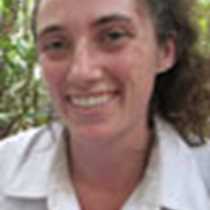The National Geographic Explorer awoke to the stunning landscape of Andvord Bay, on the west coast of the Antarctic Peninsula. The ship navigated through the ice towards Neko Harbour, and while conditions would not allow for a landing there, luck would have it that the Explorer came across three humpback whales on the way out of the bay. Everyone went out on the decks to watch the whales. The captain observed a mass of krill on the bridge instruments, which confirmed why the humpback whales were in the area – it was a great spot to feed.
In the late morning, the ship cruised into Paradise Harbour and headed towards Argentina’s Almirante Brown Antarctic Base (Brown Station). We went ashore at Brown Station, and while this was a first continental Antarctic landing for most guests, this was also a seventh continent for many of the guests aboard the National Geographic Explorer! We took a group photo before heading back to the ship.
The vessel transited in the afternoon towards Fournier Bay, charted by the French Antarctic Expedition under Jean-Baptiste Charcot and named for Vice Admiral of the French Navy, Ernest Fournier. Fournier Bay is on Anvers Island, west of the Antarctic Peninsula.
In Fournier Bay, we set out in Zodiacs to explore among the icebergs and bergy bits while looking for wildlife. Antarctic terns flew overhead, while blue-eyed shags dove into the water in search of food. We never knew what we would find around the next iceberg. Sometimes we found Weddell seals or crabeater seals, and a few lucky Zodiacs even came across a leopard seal hauled out on the ice.







